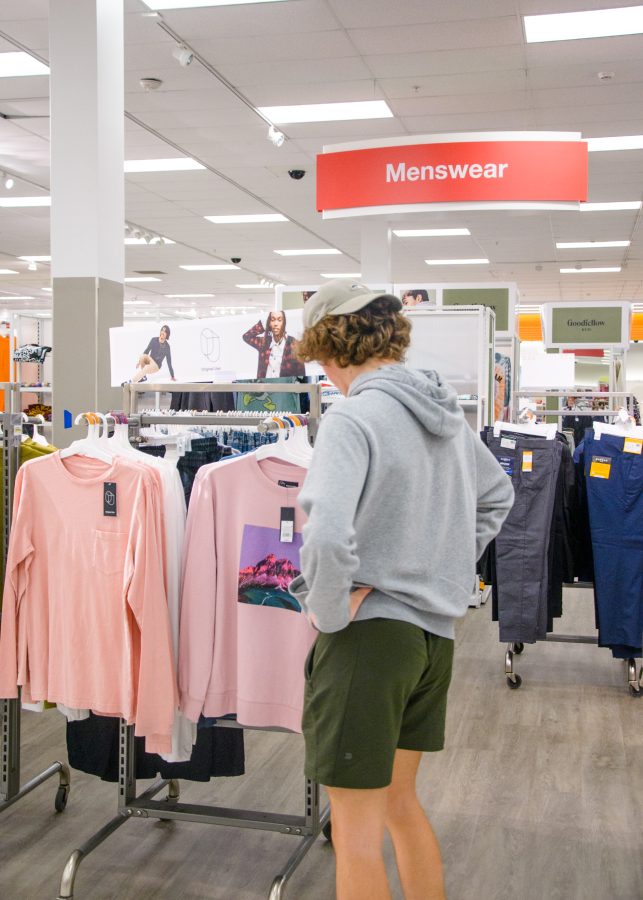Everyone forms opinions on others’ looks. While some folks have the decency to keep their feelings to themselves, what others do or wear can be quite upsetting to some. The freedom of self-expression is something everyone has the right to, and some individuals choose to express themselves through their fashion. Most dress up for themselves, not to impress anyone around them.
The color one wears seems to be quite a controversial topic. The gendered association of blue and pink is ridiculous. How can colors be classified as belonging to a specific gender? Feminine-presenting individuals often have the freedom to wear whatever color they want without judgment, but those who are masculine-presenting are often criticized for wearing pink.
The color pink began to gain its current symbolism during the Holocaust, when LGBTQ+ individuals were marked with an upside-down pink triangle in the internment camps. As Olivia B. Waxman for TIME said:
“Just as the Nazis forced Jewish people to wear a yellow Star of David, they forced people they labeled as gay to wear inverted pink triangles (or ‘die Rosa-Winkel’). Those thus branded were treated as ‘the lowest of the low in the camp hierarchy,’ as one scholar put it” (1).
The symbol was later adopted by The AIDS Coalition to Unleash Power, also known as ACT UP, who flipped the triangle right-side up and reclaimed the pink triangle for their own causes (2). This organization was established in 1997, to combat AIDS and put an end to the pandemic. The color represents the years of oppression that the LGBTQ+ community has faced.
Rather than focus on the history of the color, many have simply come to associate the rosy shade with the queer community, and often, preconceived notions about this community come to mind. The connection to the queer community, in addition to the changing market surrounding baby clothes, deemed blue a masculine color and pink a feminine one.
The next time people see the color pink and immediately associate it with being “gay” or “sissy,” stop and consider the broader meaning. It often stirs up conflicted feelings, given that it symbolizes a history of prejudice, adversity and a struggle for identity. It merits praise for being a defender and spokesperson for diverse communities. Pink is a symbolic and powerful color that symbolizes transformation and freedom of expression. Pink symbolizes equality.
In an interview with Nabeera Shahzad, the coordinator for the Queer Student Center at UMass Boston, she said: “I do think that often, the color pink is perceived as ‘feminine.’ Often, we see people try to discourage boys from dressing in pink, and if they do, they are almost immediately assumed to be part of the queer community.”
In addition, when asked about her opinion on societal gender norms, Shahzad replied, “I think it is crucial that we stop assigning colors to a specific gender, as it is part of the toxic heteronormative culture that enforces those stereotypes.”
Parents, media and education systems are just some of the factors that influence how people perceive gender. Children are taught about gender roles very early on in life, as it is ingrained in every part of society. Depending on the child’s sex, newborns are wrapped in either a pink or blue blanket at the hospital. Most clothing brands only offer heavily gendered clothing for babies with no neutral options.
Gendered colors are completely out of date. To create an environment free of stereotypes, sexism, and other forms of bias, everyone should stop reinforcing these decades-old opinions. Collectively, society must do individual work to undo these gendered biases and teach gender neutrality to kids early on. With time, perhaps this will work, and people can create a community accepting of all genders.
If students need help or guidance from the Queer Student Center, it is located on the third floor of Campus Center. They can also be reached by email at [email protected].
Breaking the binary: Pink is for everyone
A student buys pink clothing from Target. Photo by Olivia Reid / Mass Media Staff
Contributors
Vansh Khokhani, Arts Writer

Olivia Reid, Photo Editor
Olivia Reid (she/her) is a senior majoring in communications. One of her favorite experiences was covering Taylor Swift’s The Eras Tour and getting to professionally photograph the show.

